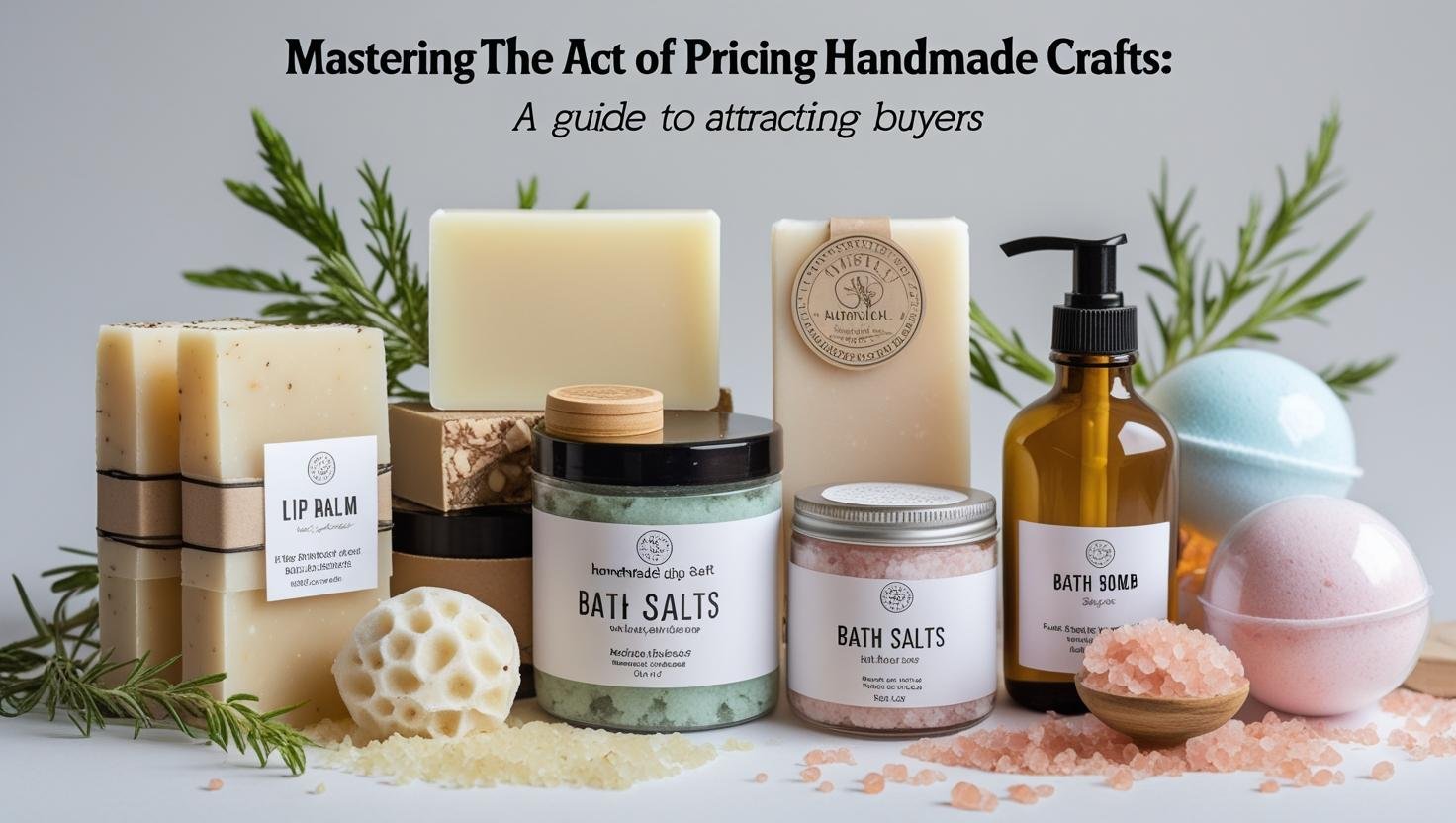Mastering the Art of Pricing Handmade Craft: A Guide to Attracting Buyers
Are you an artisan with a passion for creating stunning handmade crafts? Whether you're crafting jewellery, artwork, home decor, or any other unique piece, pricing your creations can sometimes feel like navigating uncharted waters. How do you strike the balance between valuing your work and appealing to buyers? Fear not, for in this blog, we'll uncover the secrets to setting prices that not only reflect the true worth of your craftsmanship but also attract eager buyers.
1. Account for Material Costs:
Begin by calculating the cost of materials used in your craft. From fabrics to beads and paint to wire, ensure you consider even the tiniest detail. This forms the foundation of your pricing and prevents underestimating the value of your time and effort.
2. Factor in Time and Labor:
Your skills, creativity, and time are invaluable. Estimate the time it takes to create each piece and assign an hourly wage to your work. Don't undervalue yourself; remember that every hour invested contributes to the uniqueness and quality of your craft.
3. Research the Market:
Investigate what similar handmade items are being sold for in your niche. This helps you understand the general price range customers are willing to pay. While being competitive is important, remember that your unique craftsmanship deserves appropriate compensation.
4. Add Overhead Costs:
Consider additional expenses such as studio rent, packaging materials, marketing, and shipping fees. These overhead costs need to be factored into your pricing to ensure that your business remains sustainable.
5. Assess Perceived Value:
Crafting isn't just about the materials; it's about the story, the effort, and the love that goes into each piece. Highlight these aspects in your product descriptions and photos to create a strong emotional connection that can justify a higher price.
6. Offer Different Price Points:
Provide a range of products with varying price points. This allows customers with different budgets to enjoy your craft. From smaller accessories to larger statement pieces, diversity in pricing can attract a wider audience.
7. Display Professionalism:
Your pricing should reflect the professionalism of your craft. Avoid setting prices that are too low, as this might signal poor quality. Buyers often associate higher prices with better craftsmanship and value.
8. Highlight Your Unique Selling Points:
Every artist has something special to offer. Whether it's intricate details, eco-friendly materials, or one-of-a-kind designs, make sure buyers understand what sets your creations apart from the mass-produced alternatives.
9. Offer Limited Editions or Customisation:
Crafting limited editions or offering customization can justify higher prices. People are often willing to pay more for something unique and tailored to their preferences.
10. Regularly Reevaluate Prices:
As your skills improve and your brand evolves, periodically revisit your pricing strategy. Adjusting prices to match your growth and experience ensures your work continues to be accurately valued.
Conclusion:
Pricing your handmade crafts is a delicate balance that requires a combination of art, business acumen, and an understanding of your worth. By considering material costs, your time and labour, market trends, and the emotional value you bring to each piece, you can set prices that resonate with buyers and reflect the true value of your craft. Remember, when you price your creations appropriately, you not only attract buyers but also ensure the sustainability of your creative journey.
Let's dive into some tangible examples of how to price handmade craft products across different categories:
Example 1: Handmade Jewellery (Earrings)
1. Material Cost: £3 (Beads, wires, earring hooks)
2. Labour Cost: 1 hour at £15 per hour
3. Overhead Cost: £2 (Packaging, business cards)
4. Perceived Value: £5 (Considering uniqueness and craftsmanship)
5. Total Costs: £3 + £15 + £2 = £20
6. Desired Profit Margin: 40% of total costs
7. Final Price: £20 + (£20 x 0.4) = 28
Price: £28 per pair of earrings
Example 2: Hand-Painted Canvas Art
1. Material Cost: £10 (Canvas, paint, brushes)
2. Labour Cost: 4 hours at £20 per hour
3. Overhead Cost: £5 (Protective packaging, marketing)
4. Perceived Value: £15 (Considering artistic skill and uniqueness)
5. Total Costs: £10 + (£20 x 4) + £5 = £95
6. Desired Profit Margin: 50% of total costs
7. Final Price: £95 + (£95 x 0.5) = £142.5
Price: £143 for the hand-painted canvas art
Example 3: Handmade Fabric Tote Bag
1. Material Cost: £8 (Fabric, thread, hardware)
2. Labour Cost: 2.5 hours at £18 per hour
3. Overhead Cost: £3 (Packaging, labels)
4. Perceived Value: £10 (Considering fabric choice, design, and functionality)
5. Total Costs: £8 + (£18 x 2.5) + £3 = £59
6. Desired Profit Margin: 60% of total costs
7. Final Price: £59 + (£59 x 0.6) = £94.4
Price: £94 for the handmade fabric tote bag
Example 4: Custom Handmade Greeting Card
1. Material Cost: £2 (Cardstock, embellishments)
2. Labour Cost: 0.5 hours at £25 per hour
3. Overhead Cost: £1 (Envelopes, packaging)
4. Perceived Value: £3 (Considering personalisation and craftsmanship)
5. Total Costs: £2 + (£25 x 0.5) + £1 = £15.5
6. Desired Profit Margin: 70% of total costs
7. Final Price: £15.5 + (£15.5 x 0.7) = £26.35
Price: £26 for the custom-made handmade greeting card
Remember, these examples are just starting points. The labour cost per hour, profit margin, and perceived value may vary based on your location, expertise, market demand, and your brand's reputation. Always research your market and adjust prices accordingly to ensure that both you and your customers find value in your handmade craft products.

